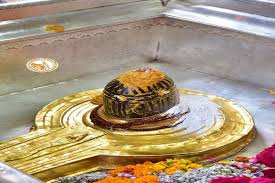Table of Contents
ToggleKashi Vishwanath Temple

Kashi Vishwanath Temple
Kashi Vishwanath Temple is one of the most revered and sacred temples in India, located in Varanasi, Uttar Pradesh. Dedicated to Lord Shiva, it is considered one of the 12 Jyotirlingas, the most significant sites for Hindu devotees. The temple’s rich history, cultural significance, and spiritual importance make it a major pilgrimage destination. Here’s a detailed overview of the Kashi Vishwanath Temple:
1. Location:
- The Kashi Vishwanath Temple is situated in Varanasi, one of the oldest cities in the world. It is also referred to as Kashi, which is a historic name for Varanasi, and is located on the banks of the Ganges River in the northern state of Uttar Pradesh.
- Varanasi is considered the spiritual capital of India, and the Kashi Vishwanath Temple holds a prominent position in this sacred city.
2. Mythological Significance:
-
The name Kashi Vishwanath is derived from two words:
- Kashi: Refers to the ancient city of Varanasi, which is believed to be the city of Lord Shiva.
- Vishwanath: Means “Lord of the Universe,” which refers to Lord Shiva, who is believed to rule over all realms of existence.
-
According to Hindu mythology, Varanasi is one of the oldest living cities in the world, with a rich association to Lord Shiva. It is believed that Lord Shiva himself established the city and that it has been a place for worship and spiritual awakening for thousands of years.
-
Story of Kashi: It is believed that Lord Shiva granted the boon to the city of Kashi (Varanasi) that anyone who dies here will attain moksha (liberation from the cycle of life and death). It is said that Lord Vishnu himself declared Kashi to be the most sacred place on Earth, making it a top pilgrimage site.
3. Jyotirlinga Significance:
- The Kashi Vishwanath Temple is one of the 12 Jyotirlingas, which are considered the holiest shrines dedicated to Lord Shiva. A Jyotirlinga is believed to be a self-manifested or Swayambhu form of Lord Shiva, symbolizing his infinite nature and power.
- The temple is considered the most important Jyotirlinga due to its deep spiritual significance and its association with liberation (moksha).
4. Historical Background:
- The Kashi Vishwanath Temple has a long and fascinating history, with its roots going back to ancient times.
- The original temple is believed to have been built by Vishnu, according to the Skanda Purana, one of the ancient texts. Later, the temple underwent several renovations.
- The first major temple was constructed by the Kashi Naresh (the king of Kashi) around 1000 BCE. The temple was later destroyed and rebuilt multiple times during different periods in history.
- The temple was destroyed by Aurangzeb, the Mughal emperor, in the 17th century. In its place, he built a mosque called the Gyanvapi Mosque. However, after India gained independence, the efforts to rebuild the original temple began.
- In 1780, the Maratha ruler, Ahilyabai Holkar, of Indore, rebuilt the Kashi Vishwanath Temple on the same sacred spot where the original temple once stood.
5. Temple Architecture:
- The Kashi Vishwanath Temple is renowned for its intricate architecture and grand design, reflecting the traditional Hindu temple style.
- The main sanctum sanctorum (garbhagriha) of the temple houses the Shiva Lingam, which is the primary object of worship. The Shiva Lingam at Kashi Vishwanath is revered as the embodiment of Lord Shiva.
- The temple’s architecture is an impressive blend of traditional Nagara-style architecture, and it has several magnificent spires and domes.
- The Golden Dome of the temple is one of the most iconic features, with its glittering golden design. The golden plating on the spires was made possible through the efforts of Maharani Ahilyabai Holkar in the 18th century.
6. The Kashi Vishwanath Corridor Project:
- In recent years, the Kashi Vishwanath Corridor Project has been launched to enhance the facilities for pilgrims and to improve the infrastructure around the temple.
- The project aims to widen the access roads, provide better amenities, and connect the Kashi Vishwanath Temple with the Ganges River. The aim is to improve the pilgrim experience, ensuring better accessibility and comfort.
7. Cultural Significance:
-
The Kashi Vishwanath Temple holds immense cultural importance and is closely associated with several Hindu rituals and festivals.
-
The temple is visited by millions of devotees, including pilgrims from India and abroad, who come to seek the blessings of Lord Shiva. The temple attracts devotees year-round, with particular crowds during Mahashivaratri, a major festival dedicated to Lord Shiva.
-
Special Offerings: Devotees offer prayers, flowers, milk, and water to the Shiva Lingam, as well as bel leaves (leaves of the Bael tree), which are sacred to Lord Shiva.
-
The Ganga Aarti performed on the banks of the Ganges near the temple is another iconic feature of the spiritual experience in Varanasi.
8. Pilgrimage and Spiritual Importance:
- Varanasi is considered one of the seven Moksha Puris (cities that provide liberation from the cycle of life and death), making the Kashi Vishwanath Temple one of the most important pilgrimage destinations in India.
- Bathing in the Ganges River at Varanasi is believed to purify one’s soul and body, and this practice is often combined with a visit to the Kashi Vishwanath Temple to offer prayers to Lord Shiva.
- The temple and the Ganges have been central to the spiritual traditions of the Hindu religion for centuries, and many people come to Varanasi with the hope of attaining moksha.
9. Festivals and Events:
- Mahashivaratri: The most important festival at the Kashi Vishwanath Temple, celebrated with grand ceremonies, special prayers, and massive participation from devotees. Thousands of people gather for prayers, fasting, and spiritual rituals on this day.
- Kartik Purnima: Another significant festival, with special rituals performed at the temple.
- Ganga Dussehra: Celebrated in honor of the descent of the Ganges River to Earth, this festival also holds a special place at the Kashi Vishwanath Temple.
10. Access and Visiting Information:
- By Road: The temple is easily accessible by road within Varanasi, and local transport like rickshaws and taxis are available for pilgrims.
- By Train: The Varanasi Junction is the closest railway station, located around 3 km from the temple.
- By Air: The nearest airport is Lal Bahadur Shastri International Airport, about 25 km from the temple.
- Pilgrims are required to go through a security check due to the large number of visitors. The area around the temple is typically crowded, especially during festivals, so it is advised to plan accordingly.
11. Nearby Attractions:
- Ganges River: Visiting the Ganges River and experiencing the Ganga Aarti is an essential part of the pilgrimage.
- Dashashwamedh Ghat: One of the most prominent ghats of Varanasi, known for its spiritual ambiance.
- Manikarnika Ghat: A famous ghat where Hindu cremations take place, symbolizing the cycle of life and death.
- Banaras Hindu University (BHU): A well-known educational institution in Varanasi with historical and cultural significance.
The Kashi Vishwanath Temple in Varanasi, Uttar Pradesh, has a deep and fascinating history that spans thousands of years. The temple’s significance is rooted in mythology, ancient history, cultural heritage, and its role as a major religious and spiritual hub for Hindus. Below is a detailed history of the Kashi Vishwanath Temple:
1. Mythological Background:

Kashi Vishwanath Temple
-
The Kashi Vishwanath Temple is dedicated to Lord Shiva, who is worshipped here in the form of a Shiva Lingam. The temple’s name is derived from two key elements:
- Kashi: Refers to the city of Varanasi, which is considered one of the oldest cities in the world, believed to be the city founded by Lord Shiva.
- Vishwanath: Meaning “Lord of the Universe,” another name for Lord Shiva, signifying his supreme divine power.
-
According to Hindu mythology, Varanasi (also called Kashi) is believed to be the place where Lord Shiva resided. It is said that Lord Shiva granted a boon that anyone who dies here or who is cremated here will attain moksha (liberation from the cycle of life and death).
-
The city and the temple are associated with the concept of eternal life, and they are believed to be the abode where Lord Shiva’s divine power is most pronounced. Many Hindu scriptures such as the Skanda Purana and Kashi Khand (a section of the Skanda Purana) have significant mentions of Kashi Vishwanath as an important place of pilgrimage.
2. Early History:
-
The origins of the Kashi Vishwanath Temple are not entirely clear, but the temple is believed to have existed for over 2,000 years. It is mentioned in various ancient texts, including the Rigveda, which speaks of the city of Kashi and Lord Shiva being worshipped there.
-
Ancient mentions: References to the temple can be found in Puranic texts and ancient scriptures, which indicate that the worship of Lord Shiva in the form of a lingam at Kashi has been a tradition for millennia.
-
The original temple was believed to have been established during the Vedic period or possibly earlier, around 1000 BCE. According to legend, the first temple was constructed by Vishnu himself.
3. Destruction and Reconstruction through the Ages:
The temple faced multiple destructions and reconstructions throughout its history due to invasions and foreign rule:
a. First Destruction and Reconstruction:
- The temple has been destroyed and rebuilt several times throughout history. The first major destruction is believed to have occurred under the reign of Mahmud of Ghazni (a Turkish invader) in the 11th century, around 1023 CE.
- The temple was rebuilt later by local rulers, though specific details about the reconstruction during this period are scarce.
b. The Mughal Period and the Destruction by Aurangzeb:
- The temple faced a significant blow during the reign of the Mughal emperor Aurangzeb (1658–1707). In 1669, Aurangzeb ordered the demolition of the Kashi Vishwanath Temple, and it was replaced with a mosque called Gyanvapi Mosque.
- This was part of a larger campaign of destroying Hindu temples during his rule, although Aurangzeb’s actions were controversial and are a dark chapter in Indian history.
- However, the temple’s importance as a sacred site for Hindus never waned, and despite the destruction, the belief in the holiness of Kashi and the Shiva Lingam continued to thrive.
c. The Maratha Restoration:
-
The temple remained in ruins for a long period after Aurangzeb’s destruction. However, the Maratha rulers, particularly Maharani Ahilyabai Holkar of Indore, played a significant role in restoring the temple in 1780.
-
Maharani Ahilyabai Holkar rebuilt the Kashi Vishwanath Temple on the original site, ensuring the restoration of its sacred structure. She also contributed to the building of a golden spire and other additions that made the temple one of the most iconic landmarks in Varanasi.
-
After the restoration, the temple flourished once again as a center of worship and pilgrimage.
4. British Era and Later Developments:
- During the British colonial period, the temple underwent several modifications and faced challenges from the colonial administration, but it remained a significant religious center.
- The British government imposed restrictions on temple activities and did not allow major rebuilding efforts, but despite this, the Kashi Vishwanath Temple continued to attract pilgrims from all over India.
5. Post-Independence Period and Modern Day:
-
Post-independence, after India gained freedom in 1947, the temple continued to grow in importance. Efforts were made to improve the accessibility of the temple and to enhance the pilgrim experience.
-
In 1983, the Indian government set up a Trust for the management and upkeep of the Kashi Vishwanath Temple. The temple became a major center for both spiritual and cultural activities, with thousands of pilgrims visiting every year.
6. Kashi Vishwanath Corridor Project:
-
In recent years, the Kashi Vishwanath Corridor Project has been undertaken to improve the infrastructure and facilities for pilgrims. This project aims to widen the access roads, connect the temple with the Ganges River, and enhance amenities around the temple area.
-
The project also includes the development of temple squares, prayer halls, and pilgrim pathways, which will provide a more organized and pleasant experience for visitors.
7. Cultural and Spiritual Importance:
-
The Kashi Vishwanath Temple is one of the 12 Jyotirlingas, which are the most sacred Shiva temples in India. Pilgrims believe that visiting the temple and offering prayers here helps to purify their souls and leads them to moksha.
-
The temple is a part of the Char Dham (four sacred places) for Hindus, and Varanasi is one of the seven Moksha Puris (cities of liberation).
-
The Shiva Lingam worshipped here is considered one of the most powerful and revered forms of Lord Shiva. The temple also holds immense importance during various religious occasions, especially Mahashivaratri, the festival dedicated to Lord Shiva.
8. Modern Pilgrimage and Tourism:
-
Kashi Vishwanath Temple remains one of the most visited pilgrimage sites in India, attracting millions of devotees and tourists each year. The temple is not only visited by Hindus but also by people of all faiths, drawn to the spiritual ambiance of Varanasi.
-
The temple has become a key landmark in the spiritual landscape of Varanasi, which is often regarded as the spiritual capital of India. The Kashi Vishwanath Temple, along with the Ganges River, forms the center of the city’s religious and cultural life.
-
Many foreign tourists also visit the temple, drawn by its historical significance and cultural heritage. It remains a place where people can seek spiritual solace and enlightenment.
The Kashi Vishwanath Temple is not just a revered temple dedicated to Lord Shiva but also one of the most significant religious and historical landmarks in India. Here’s a more comprehensive look at the temple, its spiritual significance, cultural importance, modern-day relevance, and the Kashi Vishwanath Corridor Project:
1. Religious and Spiritual Significance:
-
One of the 12 Jyotirlingas: The Kashi Vishwanath Temple is one of the 12 Jyotirlingas, which are the holiest shrines of Lord Shiva. Pilgrims believe that visiting and worshipping the Shiva Lingam here helps them achieve moksha (liberation from the cycle of birth and rebirth). It is widely considered the most sacred of all Jyotirlingas due to its ancient and deep connection with Lord Shiva and the city of Varanasi.
-
Lord Shiva’s Abode: The temple is believed to be the abode of Lord Shiva in his most powerful and divine form. It is said that the city of Varanasi, where the temple is located, is the eternal city and is blessed with Lord Shiva’s presence. It is mentioned in ancient texts and is considered the ultimate spiritual destination.
-
Kashi as the “City of Moksha”: The city of Kashi (modern-day Varanasi) is considered one of the seven Moksha Puris in Hinduism, where it is believed that dying here and being cremated on the banks of the Ganges will lead to the attainment of moksha. The Kashi Vishwanath Temple is at the heart of this belief.
-
Pilgrimage Destination: Varanasi, also known as Kashi, is one of the oldest living cities in the world. Pilgrims from all over India and across the globe come to Kashi Vishwanath Temple for spiritual purification and to perform rituals for their ancestors. The temple is part of a larger spiritual journey in which the Ganges River, Manikarnika Ghat, and Dashashwamedh Ghat also play crucial roles.
2. The Kashi Vishwanath Corridor Project:
The Kashi Vishwanath Corridor is one of the most ambitious modern projects that aims to enhance the experience for pilgrims visiting the Kashi Vishwanath Temple.
-
Improved Accessibility: The project, inaugurated by Prime Minister Narendra Modi in 2021, aims to improve infrastructure around the temple and make the area more accessible to the millions of pilgrims visiting the temple each year. The objective is to ensure better facilities for the visitors while maintaining the spiritual ambiance of the temple complex.
-
Expansion of the Temple Complex: The project includes the expansion of the temple’s boundaries and the creation of a grand entrance. This will allow better crowd management and a smoother flow of devotees. The temple is being connected to the Ganges River through a series of walkways and pathways.
-
Renovation of Nearby Areas: As part of the Kashi Vishwanath Corridor, the surrounding areas have also been renovated, with the construction of new corridors, prayer halls, dormitories for pilgrims, and other facilities to make the pilgrimage more comfortable.
-
Cultural and Heritage Preservation: While modernizing the temple infrastructure, the project also focuses on preserving the cultural heritage of Varanasi and the spiritual sanctity of the temple. Many ancient buildings and structures around the temple have been carefully restored to retain the historical significance.
-
Support for Pilgrims: The project includes provisions for accommodation, food, and medical facilities to ensure that pilgrims’ needs are met.
3. Temple Architecture:
-
Traditional and Modern Styles: The Kashi Vishwanath Temple exhibits traditional Hindu temple architecture with intricate carvings, spires, and an ornate dome. The main sanctum, which houses the Shiva Lingam, is the most sacred part of the temple. Surrounding the sanctum are several smaller shrines dedicated to different deities in the Hindu pantheon.
-
Golden Dome and Spire: One of the most iconic features of the temple is its golden spire and gold-plated dome, which are said to have been added by Maharani Ahilyabai Holkar of Indore in the 18th century. The gold is said to represent the divine light of Lord Shiva.
-
Shiva Lingam: The main idol of the temple is the Shiva Lingam, which is worshipped by thousands of devotees every day. The Lingam is made of black stone, and devotees offer water, milk, and bel leaves to the deity. The temple also has a sacred well called the Gyanvapi, which is a site of significance for pilgrims visiting the area.
-
Gyanvapi Mosque: Situated adjacent to the Kashi Vishwanath Temple is the Gyanvapi Mosque, which was built by the Mughal Emperor Aurangzeb in the 17th century. The mosque was constructed after the destruction of the original Kashi Vishwanath Temple by Aurangzeb, though the temple was later rebuilt. The mosque has become an integral part of the historical narrative and an area of interest for scholars and tourists.
4. Festivals and Celebrations:
-
Mahashivaratri: The most important festival associated with the Kashi Vishwanath Temple is Mahashivaratri, which is a celebration dedicated to Lord Shiva. Thousands of pilgrims visit the temple on this night to offer prayers, sing devotional songs, and observe fasts. The entire city of Varanasi is illuminated, and the atmosphere is charged with religious fervor.
-
Kartik Purnima: Another major festival celebrated at the Kashi Vishwanath Temple is Kartik Purnima. It falls on the full moon night in the month of Kartik (October/November). Devotees take a holy dip in the Ganges River and visit the temple to offer prayers.
-
Ganga Dussehra: This festival marks the descent of the Ganges River to Earth and is celebrated by pilgrims in Varanasi, who offer prayers to both the river and Lord Shiva.
-
Makar Sankranti: This festival marks the transition of the sun into the zodiac sign of Capricorn and is celebrated with much enthusiasm at the Kashi Vishwanath Temple, with special prayers and rituals.
-
Other Rituals: Daily rituals at the temple include abhishekams, aarti, and prayers. The early morning Ganga Aarti at Dashashwamedh Ghat is an essential part of the pilgrimage experience.
5. Pilgrimage and Visiting Information:
-
How to Reach:
- By Air: The nearest airport is Lal Bahadur Shastri International Airport, about 25 km from the temple.
- By Train: The Varanasi Junction is the main railway station, just 3 km away from the temple.
- By Road: Varanasi is well-connected by road to various parts of India, and local transport like rickshaws, taxis, and buses are available.
-
Temple Timings: The temple is open throughout the day, from early morning to late evening. However, special rituals are conducted during early hours and in the evening.
-
Visitor Information: Pilgrims can offer prayers at the main temple and also explore the surrounding ghats, as they are an integral part of the religious experience. Due to the popularity of the temple, there may be long queues, especially during festivals.
6. Cultural Impact and Global Significance:
-
Cultural Hub: The Kashi Vishwanath Temple is not only a religious landmark but also a cultural symbol. The city of Varanasi is renowned for its classical music, arts, and dance forms. Many famous scholars, saints, and spiritual leaders have visited or lived in Varanasi, contributing to its rich cultural legacy.
-
International Pilgrimage: The Kashi Vishwanath Temple attracts pilgrims from all over the world, especially the Indian diaspora. It is often visited alongside other significant pilgrimage sites in India like Tirupati, Rameswaram, and Dwarka.
-
Interfaith Harmony: Varanasi has always been a symbol of interfaith harmony, with temples, mosques, and other places of worship coexisting peacefully. The Kashi Vishwanath Temple and Gyanvapi Mosque highlight the religious diversity and coexistence in the region.
Conclusion:
The Kashi Vishwanath Temple is much more than a sacred place of worship; it is an integral part of India’s spiritual, cultural, and historical identity. Whether it’s the ancient mythological beliefs, the grand architectural features, or the modern-day pilgrimages, the temple continues to inspire millions of devotees and tourists. With the ongoing Kashi Vishwanath Corridor Project, the temple’s infrastructure and facilities will be further enhanced, making it even more accessible and meaningful for future generations.The history of the Kashi Vishwanath Temple is a testament to the resilience of faith and the enduring devotion to Lord Shiva. Despite facing multiple invasions, destructions, and challenges throughout history, the temple has remained a central symbol of spirituality and devotion. Its deep connection to the city of Varanasi, the holy Ganges River, and the ancient traditions of Hinduism makes it one of the most significant temples in the world. Today, Kashi Vishwanath continues to serve as a beacon of faith for millions of Hindus and remains one of India’s most sacred pilgrimage destinations.The Kashi Vishwanath Temple is not just a religious site but a spiritual center that has been a beacon of faith and devotion for centuries. Its historical, cultural, and mythological significance makes it an integral part of the Hindu tradition. The temple continues to draw millions of visitors and pilgrims, offering a unique spiritual experience and an opportunity to connect with Lord Shiva.
MORE INFORMATION

Kashi Vishwanath Temple






Recent Comments